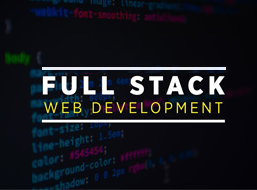Table of contents
|
1. Why is UI/UX Learning not all theory |
|
2. Practice Makes You Perfect in UI/UX |
|
3. The Real-Time Projects and Their Key Role in UI/UX Learning |
|
4. Real-World Training on UI/UX Design Training Benefits |
|
5. What Makes UI/UX Training Different With Real-Time Projects |
|
6. Gaining Confidence and Portfolio Value |
|
7. Collaboration and Communication Learning |
|
8. Using Feedback as an Improvement |
|
9. Conclusion |
UI/UX (User Interface and User Experience design ) is changing quickly. And the most wonderful method to learn it is not only with the help of textbooks or video lectures, but by doing it. In theory, knowing what the theory of good design is and being able to apply the theory of good design in real life are different things. Accepting real-time projects is one of the best ways of closing this gap. In this article, we are going to discuss how practical experience can turbocharge your UI / UX Learning, particularly in case you are trying to find hands-on UI/UX training that delivers.
Why is UI/UX Learning not all theory
Before taking an actual course on UI/UX design, a lot of beginners begin their learning process by reading blog posts, taking online tutorials, or sometimes even enrolling in a course on UI/UX design in Bangalore. Though such initial steps are significant, they are usually deficient in one crucial aspect, i.e., application. That is just a basis of theoretical knowledge. It is easy to leave the concepts abstract and vague without actually engaging in the work of any project.
Practice Makes You Perfect in UI/ UX
Consider you are a learner who is learning how to swim. You can spend hours of video-watching and reading numerous guides on the subject. However, until you get in the water, no real learning takes place. Design is not any different. Practical UI/UX experience allows you to practice what you have learned and understand what works, what you fail at, and how real users will use your solutions. By facing the actual UI/UX issues, you will learn better, recall how to do things much quicker, and how to work around them, as there are problems that theory alone will not help you solve.
The Real-Time Projects and Their Key Role in UI/UX Learning
When the actual real-time projects form part of the course syllabus at the UI/UX design course in Bangalore or any other place, you come to feel the difference instantly. Real-time projects imply the fact that you work with real problems, real deadlines, and even real clients. It is here that rapid learning occurs.
Projects require you to do user research, make personas, sketch some wireframes, build some prototypes, and get some feedback. Each step mock-ups what you would do in real-life employment. Mentor comments, user comments, or even comments of your peers are much stronger, from your point of view, than a grade or a quiz score. You learn through your mistakes, and small achievements help to make you feel better.
Real-World Training on UI/UX Design Training Benefits
The exposure to the unpredictable is one of the greatest UI/UX design training advantages in the real world. There is no single project. You will be taught how to cope with technical constraints, evolving needs, spontaneous feedback, and narrow timelines. This is what employers seek.
When presenting a portfolio with as much content as possible, including the real-time projects in it, you are not demonstrating only your skills. You are demonstrating, as well, that you know how it works, can work in groups, and have already solved real design issues. Such evidence distinguishes you in a highly competitive market.
What Makes UI/UX Training Different With Real-Time Projects
Conventional classes could take you step by step through theory, or take you through what has been designed already and ask you to repeat it. However, the training in UI/UX with the actual projects makes it a challenge. This is not a repeat of what already exists, but inventing new solutions to an unsolved problem. You get to develop empathy towards users, the art of trade-offs, seeking and taking feedback, and at times, justify the decisions. These are practical skills that cannot be imparted using stationary examples.
Many UI/UX Learning programs are now focusing on this model-and they have a good reason to do so. The students who engage in live projects obtain a skill much more quickly and are much more competent during a job interview or in the context of the professional world, in general.
Gaining Confidence and Portfolio Value
It is not only about completing UI/UX training with real-time projects, but it can teach you something, and it provides you with concrete evidence of your skills. Each project that you complete can be used as a story that you tell us or potential employers, clients, or partners.
You can make an impressive effect by displaying your real-world project, including your design process, pitfalls, and workarounds, rather than a list of technical skills in your resume.
Nowadays, portfolios that are based on practical UI/UX training are sought by many hiring managers. They are interested to be aware that you are capable of employing design thinking in the concept as well as in the implementation. Nothing is stopping you from working on great projects via a UI/UX design course in Bangalore already.
Collaboration and Communication Learning
The opportunity to cooperate with other people can also be seen as another advantage of UI/UX training, including real-time projects. UI/UX is not only about sitting behind a computer screen and coming up with beautiful interface designs. You are going to need to talk to developers, project managers, clients, and even real users. Such cooperation abilities are essential in the workplace.
When you are learning UI/UX with live projects, you also learn how to present your ideas, accept constructive criticism, and modify your designs according to the feedback. These are the main practical, real-world UI/UX design training benefits that you can never obtain during individual academic activity.
Using Feedback as an Improvement
A major plus of doing real projects is being straightforwardly (sometimes ruthlessly) reviewed. The rub and burn may be temporary, but with time, you come to appreciate the feedback as a means of development rather than a means of critique. Every revision session makes you sharper and teaches you what works. You have the opportunity to check the ideas on the market and fail; at least you will always learn.
Conclusion
In conclusion, reading and theory are a necessity, but there is nothing like solving real-world problems in real-time. To speed up your UI/UX Learning, ask around to find practical hands-on UI/UX training that gets you onto projects. If you are attending a UI/UX design course in Bangalore or you are learning individually, make sure that your training involves real project work.
Keep in mind that the practical benefits of UI/UX design training are not only in what you know but also in what you can do. Therefore, get into the real-time project, develop your store, and see your abilities upgrade a notch.
Apponix has an all-inclusive UI/UX design course in Bangalore, which provides the students with practical experience using live projects. Get tutored by experts in the industry and develop a solid portfolio that would impress employers. Join and enhance your future career in the field of design and acquire fundamental skills that can satisfy employers in the region!





